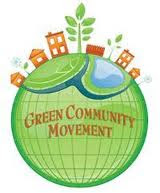‘There is no vaccine for climate change,’ U.N. environment chief says
‘There is no vaccine for climate change,’ U.N. environment chief says
- The planet is set to warm by 3°C (5.4°F) above pre-industrial levels just this century, but the world remains unprepared for climate change, a U.N. report says.
- More than a quarter of countries still don’t have a single national-level adaptation plan, and financing for adaptation measures falls far short of what is needed.
- By mid-century, adaptation costs could total up to $500 billion for developing countries, which will be disproportionately impacted by climate change despite contributing least to it.
- Less than 5% of adaptation projects have yielded any real benefits in terms of boosting resilience to date, according to a survey of 1,700 projects cited in the report.
The world is not prepared for climate change, a new U.N. report warns, highlighting how far behind countries have fallen in implementing adaptation measures.
“The hard truth is that climate change is upon us,” Inger Andersen, executive director of the U.N. Environment Programme (UNEP), said at a press briefing Jan. 14. “Its impacts will intensify and hit vulnerable countries and communities the hardest — even if we meet the Paris Agreement goals of holding global warming this century to well below 2°C and pursuing 1.5°C.”
Even the 2°C (3.6°F) goal enshrined in the global climate agreement may seem like wishful thinking at the moment. The planet is set to warm by 3°C (5.4°F) above pre-industrial levels just this century, with 2020 tied with 2016 as the hottest year on record.
Yet more than a quarter of the countries still don’t have a single national-level adaptation planning instrument.
There isn’t just a lack of adequate policies and planning, but also major financing shortfalls.
By mid-century, adaptation costs could total up to $500 billion for developing countries alone. Developed countries are responsible for a majority of the historical carbon emissions and should play a bigger role in mitigating the climate crisis, experts at the UNEP press briefing agreed.
Reports like UNEP’s “Adaptation Gap Report 2020” do more than raise alarm; they are also a call for action. The Paris climate treaty signed in 2015 is a voluntary agreement, which relies on global advocacy to pressure countries into honoring their commitments.
Adaptation financing is currently far short of what experts say is needed, at $30 billion per year, or only 5% of the total fund set aside to tackle climate change. The latter itself is deemed too little to ward off the risks posed by climate change.
COVID-19 has also pushed planning for climate change down the list of priorities for most countries. “There is no vaccine for climate change,” Andersen said.
Though some progress has been made, it has not translated into actual resilience against climate change impacts ranging from wildfires, droughts, floods to sea-level rise. Fewer than five out of 100 adaptation projects have yielded any benefits to date, a survey of 1,700 projects found.
While everyone agrees that climate change presents a global challenge, experts emphasize that adapting to these changes will have to happen at many levels. Adaptation measures include installing climate information and early-warning systems, safeguarding people in affected areas, and green investments.
At the same time, there is a growing emphasis on employing nature-based solutions that simultaneously improve the environment and human well-being.
Investing in adaptation initiatives could yield returns that are three times the cost, the Global Commission on Adaptation has estimated.
The new report complements UNEP’s “Emissions Gap Report 2020,” which tracks how countries are faring in keeping global temperature rise below 2°C. “The more we mitigate, the less we have to adapt, and the costs of adaptation are going to be much, much lower,” said Henry Neufeldt, head of impact assessment and adaptation at UNEP.
However, unlike the emissions reduction targets that are part of the Paris Agreement, there are no comparable targets for adaptation. “We don’t know exactly how much adaptation finance is needed because the goals are not clear, the targets are not clear, there is no agreed-upon goal on adaptation at national and global levels,” Neufeldt said.
Despite this, U.N. officials stressed there is a massive shortfall in funding and that there is a need to distribute the funds available to reflect the gravity of the threats.
“We need a global commitment to put half of all global climate finance towards adaptation in the next year,” Andersen said. “This will allow a huge step up in adaptation — in everything from early warning systems to resilient water resources to nature-based solutions.”
Source : mongabay.com




Comments
Post a Comment